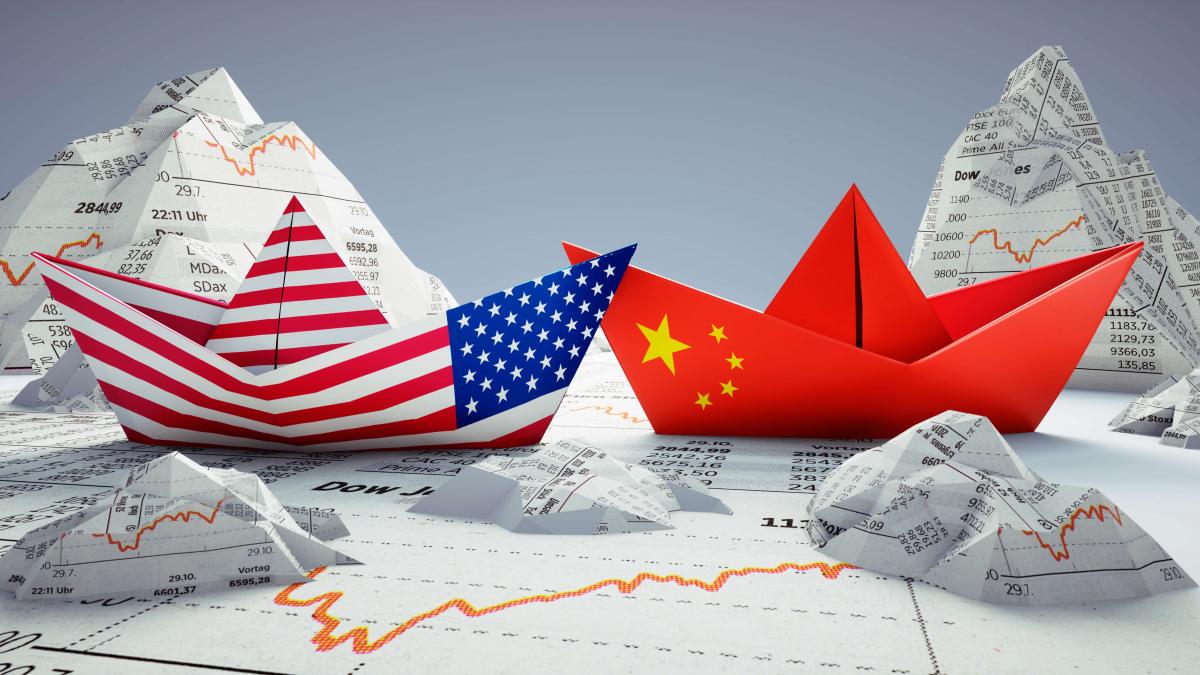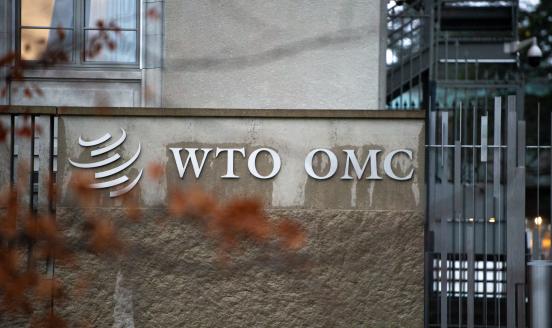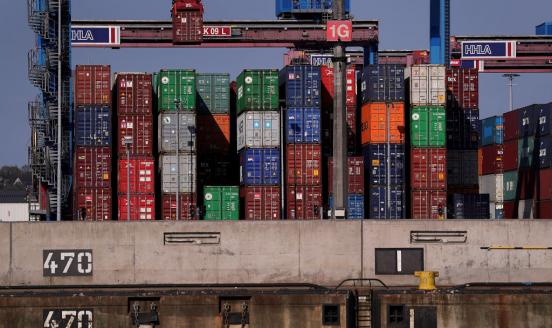Lessons from the China-US trade truce
The tentatively agreed deal between China and the United States temporarily stops a dangerous dynamic, yet it falls far short of the negotiating objec

Trade between China and the US has grown exponentially since China’s accession to the WTO in 2001, multiplying by 4.5 and reaching a total of $737 billion in 2018. The US runs a very large bilateral merchandise trade deficit of $420 billion with China, and a small $40 billion surplus in services. Total Chinese exports to the United States are now over 3 times larger than US exports to China (while goods exports are over 5 times larger). The bilateral imbalance is viewed by the Trump Administration as unacceptable and is at the heart of the dispute, aggravated by the growing geopolitical rivalry between the world’s two largest economies. Inherently, the United States believes – as do its European and Japanese allies – that China’s state-driven system is the source of unfair advantages for Chinese firms that distort world trade. These concerns relate especially to emerging competition in sectors where the United States enjoys a comparative advantage, notably in high technology. This is exemplified by measures taken to isolate Huawei, China’s most successful firm operating in the technology sector.
Following a brief honeymoon after President Trump was elected in November 2016, the United States’ relations with China, which were always problematic, became tumultuous. In March 2018 the United States imposed an across the board 25% tariff on steel and a 10% tariff on aluminium, on the grounds of national security. China retaliated with tariffs on US exports valued at $ 2.4 billion, commensurate with China’s exports of steel and aluminium to the United States. Subsequently, the US targeted China specifically, invoking “unreasonable or discriminatory” actions under the rarely used Section 301 of the Trade Act of 1974. As a first instalment, the US declared 25% tariffs on 1,333 Chinese products valued at $46.2 billion. In a second instalment, the US declared a 10% tariff on $200 billion of Chinese products. These tariffs were raised to 25% in May of this year. After an aborted negotiation to defuse tensions, Trump announced additional tariffs of 10% in August on all remaining Chinese imports (about $300 billion) to be imposed in stages in September and December (this final stage has been stopped by the tentative deal). Since Chinese merchandise imports from the United States amount only to about a fifth of Chinese exports to the United States, China’s retaliation affected only a small part of US exports. However, as the targeted US exports are mainly agriculture, and specifically soybeans, China’s retaliation is politically very costly for Trump, as farmers constitute an important part of his base in swing states. Devaluation of the Chinese Renmimbi earlier this year was also widely seen as a Chinese response to the tariffs.
The Phase 1 Deal
A hard-hitting set of US demands on China, contained in a memorandum prepared at the outset of negotiations includes reduction of the bilateral trade deficit by $200 billion in 2 years. However, American negotiators stressed from the start that their more important demands were structural reforms in China required to level the playing field for US companies. These demands included improved protection of intellectual property, removal of technology transfer requirements to operate in China, removal of regulations that impede US service exports, market access for US investment in China and improved investment protection, reduction of Chinese tariffs, removal of several non-tariff barriers, and improved access for US agricultural exports to China. As far as we can tell, China’s main negotiating objective was a return to the status quo ante, i.e. removal of all US tariffs imposed under Section 301, removal of the threat to impose new tariffs, and normalization of treatment for Huawei.
The deal fails to meet China’s objectives by a wide margin: while tariffs on $160 billion Chinese goods due in December will not come into force and those introduced in September on $112 billion will be halved (from 15% to 7.5%), all other tariffs will remain as they are. The US insisted that tariffs remain to ensure that China lives up to the deal and to retain leverage for the second phase of negotiations.
Although the details are patchy, American negotiating objectives appear to have been fulfilled on the bilateral trade front since, according to a USTR fact sheet (but not confirmed by China), China has committed to increasing the purchase of US exports by $200 billion in two years, which would see US exports to China almost double. Included are increased purchases of US agricultural products by $32 billion over the same time period. However, the deal as described fails to meet the United States’ objectives relating to structural reforms in China. China has committed to increasing legal protection for patents, as well as IP more generally, in line with its interest to make progress on this agenda as China becomes a leading innovation pole. China also commits to following through on long-standing pledges to end demands on US investors operating in China to transfer technology. China will also further open its financial markets to US firms, encompassing a wide range of financial activities, but this, too, is in line with previously announced reforms. They further pledged to avoid using currency devaluation as a competitive tool, a practice ended long ago. Specific provisions were included designed to resolve disputes within 90 days. There appears to be nothing in the deal relating to subsidization through state-owned enterprises, industrial policy (such as the Made in China 2025 program), and market access commitments in investment appear limited to the financial sector.
Interpreting the Deal
As in the case of the mini-deal with Japan, the overriding motivation on the US side is the reelection of the president. In this regard, the deal “works”, as it eases investor concerns and helps the stock market, reduces the likelihood of a recession in an election year, could even provide a small stimulus to the US economy should it slow from its current full employment path, and, most importantly, provides compensation for farmers. Despite bipartisan support for a tough stance on China regarding structural issues as well as on the trade deficit, electoral considerations dominate and have taken priority. These electoral preoccupations help explain why the deal is more favourable to China than many had anticipated – since China obtained some tariff reductions that the US had adamantly resisted, while only making only modest commitments to structural reforms.
But the famously long time horizon of Chinese decision-makers and short-term American electoral concerns provide only a part of the explanation for China’s ability to hold out under US pressure. China has deep pockets, (its foreign exchange reserves are $3.1 trillion and its official government gross debt (not counting the debt of state-owned enterprises stands at around 50% of GDP enabling it to alleviate pain of its exporters to some degree – as the US (whose government debt stands at over 100% of GDP) has done with its ad hoc subsidies to US farmers. Despite the fact that the US economy, helped by looser Fed policy, has held up better than China’s and Chinese exports to the US have declined, the Chinese have shown that they can bear the pain with the help of monetary (chiefly the devaluation of the Renminbi) and fiscal stimulus. And a modest deceleration from China’s 6% growth rate is less painful than a modest deceleration from the US 2% growth rate.
The Phase 1 deal also demonstrates that, even when it is willing to exert extreme pressure, the United States’ ability to force China to engage in deep reforms it does not want to do, or it may be inclined to do but which are resisted internally by hawkish factions, is limited. China’s economy is now larger than that of the United States at PPP exchange rates, and China’s exports of goods and services are about 6% larger than those of the United States. China’s decision-makers, at the helm of a rising world power, cannot afford to be seen to buckle under foreign pressure. Public opinion counts in China as well, and so does the way the country is perceived by the global community. The record of Trump’s muscular approach to foreign relations is short yet already full of examples where far smaller nations than China, such as Mexico, North Korea and Turkey, have defied his ultimatums when their interests, as they perceived them, demanded it. The China-US dispute is far from over, and many negotiating rounds can be expected before things settle – if they do - but in the Phase 1 exchanges, China has shown that it will engage only in those structural reforms it believes are in its own interest, and only at a measured pace.
Sadly, the deal also shows that WTO disciplines are easily cast aside by both the world’s largest trading nations. This follows the example of the United States’ mini deal with Japan, which showed that the United States was willing to ignore Article 24 of the GATT/WTO (substantially all trade) and to induce Japan to do the same. In the China-US deal, tariffs were imposed by both sides in contravention of WTO rules and the agreement by China to purchase additional US goods clearly violates the principle of non-discrimination/MFN treatment of all its trading partners. It is difficult to imagine that the $ 100 billion a year of additional US purchases (equal to the GDP of a medium-sized economy such as Morocco) will divert solely Chinese domestic production. Instead, Brazilian soybean exporters will suffer, as will Japanese and European manufacturers that compete with American firms. American tactics in Phase 1, which amount to managed trade, also help explain the determination of US Trade Representative Lighthizer to neutralize the Appellate Body at the WTO.
As in the case of the Japan deal, the US Congress, which technically has ultimate authority over trade policy and retains the power to ratify, will play no part in the Phase 1 deal, a hugely significant international trade negotiation. In the same week that the Phase 1 deal was announced, the Congress reached an agreement to ratify the USMCA, tacitly acquiescing in this state of affairs. The ongoing and accelerating power shift in trade policy from the legislature to the executive will enable Trump and other protectionist presidents in the future to restrict or liberalize US trade more easily than in the past and use it as an instrument to promote the President’s political agenda.
In the US, a hawkish faction has become established that has deplored the Phase 1 deal as a cave-in to China. Since China is unlikely to satisfy US demands that it radically overhaul its system, this hawkish faction and the broad bipartisan consensus in favour of a tough stance virtually guarantee a resumption of the trade war should Trump be reelected. If he is not, the election of a centrist Democrat (a Democrat of the left such as Elizabeth Warren or Bernie Sanders, both trade sceptics, is unlikely to meet the bar) will likely imply a lowering of tensions with China. This may culminate eventually in an agreement to roll back tariffs on both sides over time, while China engages in selective structural reforms at its own pace, for example in areas such as foreign investment, services liberalization, and intellectual property.
President Trump’s tactics may have resulted in some progress on accelerating structural reforms that China had already embarked upon but only at considerable cost for American consumers and exporters and increased uncertainty that has depressed investment and slowed global economic growth. Ironically, his efforts to reduce the bilateral trade deficit which are touted as a big success are far more likely to distort and divert trade than to result in an improved external balance. As economists have long argued, it is not possible to reduce America’s current account deficit without either increasing the economy’s productive potential or reducing aggregate spending. The President’s tariffs and the China-US deal do neither. It is no surprise that the United States’ current account deficit over the last twelve months has increased compared to the same twelve months a year ago.



